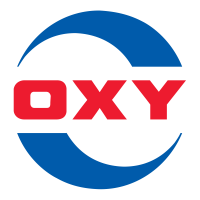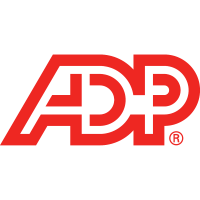
Gentex Corp
NASDAQ:GNTX


| US |

|
Fubotv Inc
NYSE:FUBO
|
Media
|
| US |

|
Bank of America Corp
NYSE:BAC
|
Banking
|
| US |

|
Palantir Technologies Inc
NYSE:PLTR
|
Technology
|
| US |
C
|
C3.ai Inc
NYSE:AI
|
Technology
|
| US |

|
Uber Technologies Inc
NYSE:UBER
|
Road & Rail
|
| CN |

|
NIO Inc
NYSE:NIO
|
Automobiles
|
| US |

|
Fluor Corp
NYSE:FLR
|
Construction
|
| US |

|
Jacobs Engineering Group Inc
NYSE:J
|
Professional Services
|
| US |

|
TopBuild Corp
NYSE:BLD
|
Consumer products
|
| US |

|
Abbott Laboratories
NYSE:ABT
|
Health Care
|
| US |

|
Chevron Corp
NYSE:CVX
|
Energy
|
| US |

|
Occidental Petroleum Corp
NYSE:OXY
|
Energy
|
| US |

|
Matrix Service Co
NASDAQ:MTRX
|
Construction
|
| US |

|
Automatic Data Processing Inc
NASDAQ:ADP
|
Technology
|
| US |

|
Qualcomm Inc
NASDAQ:QCOM
|
Semiconductors
|
| US |

|
Ambarella Inc
NASDAQ:AMBA
|
Semiconductors
|
Utilize notes to systematically review your investment decisions. By reflecting on past outcomes, you can discern effective strategies and identify those that underperformed. This continuous feedback loop enables you to adapt and refine your approach, optimizing for future success.
Each note serves as a learning point, offering insights into your decision-making processes. Over time, you'll accumulate a personalized database of knowledge, enhancing your ability to make informed decisions quickly and effectively.
With a comprehensive record of your investment history at your fingertips, you can compare current opportunities against past experiences. This not only bolsters your confidence but also ensures that each decision is grounded in a well-documented rationale.
Do you really want to delete this note?
This action cannot be undone.

| 52 Week Range |
28.39
37.1
|
| Price Target |
|
We'll email you a reminder when the closing price reaches USD.
Choose the stock you wish to monitor with a price alert.

|
Fubotv Inc
NYSE:FUBO
|
US |

|
Bank of America Corp
NYSE:BAC
|
US |

|
Palantir Technologies Inc
NYSE:PLTR
|
US |
|
C
|
C3.ai Inc
NYSE:AI
|
US |

|
Uber Technologies Inc
NYSE:UBER
|
US |

|
NIO Inc
NYSE:NIO
|
CN |

|
Fluor Corp
NYSE:FLR
|
US |

|
Jacobs Engineering Group Inc
NYSE:J
|
US |

|
TopBuild Corp
NYSE:BLD
|
US |

|
Abbott Laboratories
NYSE:ABT
|
US |

|
Chevron Corp
NYSE:CVX
|
US |

|
Occidental Petroleum Corp
NYSE:OXY
|
US |

|
Matrix Service Co
NASDAQ:MTRX
|
US |

|
Automatic Data Processing Inc
NASDAQ:ADP
|
US |

|
Qualcomm Inc
NASDAQ:QCOM
|
US |

|
Ambarella Inc
NASDAQ:AMBA
|
US |
This alert will be permanently deleted.
 Gentex Corp
Gentex Corp
Earnings Call Analysis
 Q2-2024 Analysis
Gentex Corp
Q2-2024 Analysis
Gentex Corp
In the second quarter of 2024, Gentex Corporation faced notable challenges. While early forecasts kept expectations high, an unexpected downturn in June pulled the quarter’s performance well below projections. The company reported net sales of $572.9 million, a decrease from $583.5 million in the same period last year. This shortfall was mainly attributed to a 3% decline in light vehicle production across North America, Europe, Japan, and Korea . The company's revenue missed its forecast by approximately $50 million, primarily due to reduced shipments to some of its largest customers .
Gentex's gross margin stood at 32.9%, slightly lower than the 33.1% reported in the previous year. This dip was driven by lower-than-expected sales and an unfavorable product mix, especially in Full Display Mirror and Exterior Mirror unit shipments. Cost reductions in purchasing helped, but were insufficient to offset the negative impacts . Operating expenses, on the other hand, increased by 12% to $73.7 million, mainly due to higher staffing costs and engineering-related professional fees. These expenses are in line with the company's expectations for the year, especially with ongoing R&D investments and new product launches .
The second quarter was bustling with activity for Gentex, marked by 32 new product launches, most of which featured advanced technologies like the Full Display Mirror and HomeLink. This increased launch rate is expected to continue into the third quarter . Despite the quarter's challenges, the company began shipping Full Display Mirrors to three new OEMs and remains on track to meet its goal of shipping 500,000 additional units this year compared to 2023 .
On the financial front, Gentex demonstrated resilience. Cash and cash equivalents were $260.2 million, up from $226.4 million at the end of 2023. The company also saw growth in short-term and long-term investments, which increased to $323.6 million. Accounts receivable and accounts payable experienced shifts due to the timing of sales within the quarter . Positive cash flows from operations were notable, reaching $129.3 million for the quarter, an improvement from $120.9 million the previous year. However, capital expenditures decreased to $31.8 million, down from $47.5 million .
Despite the rocky second quarter, Gentex remains optimistic. The company adjusted its revenue forecast for 2024 to be between $2.4 billion and $2.5 billion, with gross margins expected to range from 34% to 34.5%. Operating expenses are projected to be between $295 million and $305 million. Furthermore, for 2025, the revenue forecast has been updated to approximately $2.6 billion to $2.7 billion . Light vehicle production is expected to decline modestly in 2024 but recover by 2% in 2025 .
Gentex also remained active in capital allocation strategies, repurchasing 1.4 million shares of common stock at an average price of $34.43 per share. As of June 30, 2024, about 13.2 million shares remain available for repurchase from the previously announced plan . The company continues to support these initiatives to optimize capital allocation, taking into account macroeconomic conditions and market trends.
Gentex's second quarter of 2024 highlighted significant challenges due to market volatility and unexpected declines in light vehicle production. However, with a robust portfolio of new product launches, strategic cost management, and continued focus on innovation, the company remains well-positioned for recovery and growth in the upcoming quarters. The revised forecasts reflect a cautious yet optimistic outlook, balancing current market conditions with the potential for future gains .






 You don't have any saved screeners yet
You don't have any saved screeners yet

Good day, and thank you for standing by. Welcome to the 2024 Second Quarter Gentex Financial Results Conference Call. [Operator Instructions]. Please be advised that today's conference is recorded.
I'd now like to hand the conference over to your first speaker today, Josh O'Berski, Director of Investor Relations. Please go ahead.
Thank you. Good morning, and welcome to the Gentex Corporation Second Quarter 2024 Earnings Release Conference Call. I'm Josh O'Berski, Gentex's Director of Investor Relations, and I'm joined by Steve Downing, President and CEO; Neil Boehm, CTO; and Kevin Nash, Vice President of Finance and CFO.
All contents of this conference call are the property of Gentex Corporation and may not be copied, published, reproduced, rebroadcast, retransmitted, transcribed or otherwise redistributed. Gentex Corporation will hold responsible and liable any party for any damages incurred by Gentex Corporation with respect to any unauthorized use of the contents of this conference call. This conference call contains forward-looking information within the meaning of the Gentex safe harbor statement included in the Gentex reports second quarter 2024 financial results press release from earlier this morning and as always shown on the Gentex website. Your participation in this conference call implies consent to these terms.
I'll now hand the call over to Steve Downing for our prepared remarks. Steve?
Thank you, Josh. For the second quarter of 2024, the company reported net sales of $572.9 million compared to net sales of $583.5 million in the second quarter of last year. For the second quarter of 2024, light vehicle production in North America, Europe and Japan and Korea declined by 3% compared to the second quarter of last year. During the second quarter of 2024, light vehicle production weakened in most of our primary markets. In fact, the quarter began with sales coming close to forecast for both April and May but then saw a significant change in June that left us well below our forecast for the quarter. In total, the company's revenue for the second quarter of 2024 fell short of our beginning of quarter forecast by approximately $50 million with the biggest impact coming from expected shipments to some of our largest customers. As we look to the second half of 2024, light vehicle production forecast continue to show weakness versus prior year performance but we expect to return to meaningful outgrowth versus the underlying market.
For the second quarter of 2024, the gross margin was 32.9% compared to a gross margin of 33.1% for the second quarter of last year. The second quarter of 2024 gross margin was primarily impacted by sales levels that were well below our forecast for the quarter and slightly lower than prior year levels. Additionally, unfavorable product mix resulted from lower-than-expected shipment levels with Full Display Mirror unit shipments and Exterior Mirror unit shipments being the most affected. Unfortunately, the lower sales levels and weak product mix more than offset the positive impact of purchasing cost reductions for the quarter. While our material cost reductions are in line with our estimates for 2024, our gross margin recovery plan for the year is partially dependent on sales growth and product mix improvements that did not materialize during the second quarter. Given our historical contribution margins on incremental sales, we believe that our gross margins would have been in line with our overall plan for 2024 had revenue been close to our forecast. Overall, we are very pleased with our progress on the margin recovery plan that we estimated would take until the end of 2024 to complete.
While the gross margin for the second quarter did not meet our expectations, we continue to believe that we have the right plan and team to execute our full gross margin recovery plan. Operating expenses during the second quarter of 2024 increased by 12% to $73.7 million compared to operating expenses of $65.8 million in the second quarter of last year. Operating expenses increased quarter-over-quarter, primarily due to staffing and engineering related professional fees. Our operating expenses are trending in line with our expectations for the full year, with increases primarily focused on R&D and launches of new programs and products. Operating expenses, especially R&D expenses, are expected to continue at the current pace for the rest of this year as we continue to invest in innovative products and technologies, new business awards and VA/VE initiatives for cost optimization of our bill of materials.
Income from operations for the second quarter of 2024 was $114.9 million compared to income from operations of $127.3 million for the second quarter of last year. Other income swung to a loss of $13.5 million for the second quarter of 2024 compared to income of $1.3 million in the second quarter of last year. The change was primarily driven by noncash losses of $18.3 million, resulting from mark-to-market adjustments and other market adjustments of certain holdings within the company's tech investment portfolio which were partially offset by interest income.
During the second quarter of 2024, the company had an effective tax rate of 15.1%, which was primarily driven by the benefit of the foreign-derived intangible income deduction. Net income for the second quarter of 2024 was $86 million compared to net income of $109.2 million for the second quarter of last year. The decrease in net income for the second quarter was driven by lower net sales and income from operations compared to the second quarter of last year as well as the previously mentioned changes and other income.
Earnings per diluted share for the second quarter of '24 were $0.37 compared to earnings per diluted share of $0.47 for the second quarter of '23. Earnings per diluted share for the second quarter of '24 were impacted by the lower net sales and operating income as well as the previously mentioned changes in other income for the quarter.
I'll now hand the call over to Kevin for some further financial details.
Thanks, Steve. Automotive net sales in the second quarter of '24 were $559.3 million compared to $574.1 million in the second quarter of last year. Auto-dimming mirror unit shipments decreased by 6% during the second quarter of '24 compared to the second quarter of last year. Other net sales in the second quarter of '24 were $13.6 million compared to $9.4 million in the second quarter of last year. This was driven by a $2.9 million increase in dimmable aircraft window sales and a $1.3 million increase in [ fiber protection ] sales compared to the second quarter of last year.
Looking at share repurchases. During the second quarter, we repurchased 1.4 million shares of common stock at an average price of $34.43 per share. And as of June 30, '24, the company has approximately 13.2 million shares remaining available for repurchase from the previously announced plan. We remain committed to repurchase additional shares in support of our capital allocation strategy, but share repurchases will vary from time to time and will take into account macroeconomic issues, market trends and other factors that we deem appropriate.
Looking at the balance sheet. The balance sheet comparisons mentioned today are as of June 30, '24 as compared to December 31 of '23. Cash and cash equivalents were $260.2 million compared to $226.4 million. Short-term and long-term investments combined were $323.6 million, up from $299.1 million, which includes fixed income investments as well as the company's equity and cost method investments. Accounts receivable was $306.6 million, down from $321.8 million due to the timing of sales within the quarter. Inventories were $463.5 million, up from $402.5 million and accounts payable increased to $206 million from $184.4 million.
Looking at preliminary cash flow items for the quarter. Second quarter 2024 cash flow from operations was $129.3 million up from $120.9 million in the second quarter of last year. And year-to-date cash flow from operations was $259.1 million compared to $241.8 million for calendar year '23. Capital expenditures for the second quarter were $31.8 million, compared with $47.5 million for the second quarter of last year. And year-to-date capital expenditures were $63.6 million compared to $90.3 million for calendar year '23. And depreciation and amortization for the second quarter was $24 million compared with $24.8 million for the second quarter of '23. And year-to-date D&A was $47.9 million compared with $48.9 million for year-to-date '23.
I'll now hand the call over to Neil for a product update.
Thank you, Kevin. Unlike the first quarter of 2024, the second quarter was an extremely busy launch quarter with 32 net new nameplate launches of our interior and exterior auto-dimming mirrors and electronic features. Over 65% of these net launches were advanced feature launches with Full Display Mirror, HomeLink and outside auto-dimming mirrors leading the way. As we look forward at the third quarter, we anticipate that this heavy launch rate will continue.
Now for a Full Display mirror update. We're excited to announce that during the second quarter, we began shipping Full Display Mirror to three new OEM customers, bringing our total to 19. We're now shipping Full Display Mirror for the [indiscernible] and the [indiscernible] partner. The addition of these OEM customers helps to further demonstrate the global appeal of this technology as well as its acceptance on different vehicle architectures. In addition to the new OEM customer launches, we continue to see great growth and expansion of our technology at our existing customers. We are currently shipping Full Display Mirror on over 115 nameplates globally. And despite the impacts of the second quarter, we're still on track to achieve our 2024 FDM unit shipment guidance of shipping an incremental 500,000 FDM units above the 2023 unit shipments. The first half of 2024 has been extremely busy as we've launched more projects than ever before. We're excited about the continued growth we're seeing with our technologies and appreciate all the hard work and dedication that the team at Gentex is putting in to ensure we execute flawlessly.
Also, while we're launching a lot of products and technologies, we continue to evaluate opportunities to reduce the bill of materials on existing programs as well as execute the VA/VE launches we are currently having in process. These changes are critical for our margin recovery and stabilization plan as we move into 2025 and beyond.
I'll now hand the call back over to Steve for guidance and closing remarks.
Thanks, Neil. The company's current forecast for light vehicle production for the third quarter of 2024 and full years 2024 and 2025 are based on the mid-July 2024 S&P Global Mobility forecast for light vehicle production in North America Europe, Japan, Korea and China. Light vehicle production in these markets is expected to decrease by approximately 5% for the third quarter of 2024 versus the same quarter last year. For calendar year '24, light vehicle production in these markets is now forecasted to decline by approximately 2% when compared with light vehicle production in calendar year '23. Light vehicle production for calendar year '25 is forecasted to increase by 2% versus the calendar year '24 forecast in these markets.
Based on this light vehicle production forecast and actual results for the first six months of 2024, we are making certain changes to our previously provided guidance for calendar year '24 as follows: Revenue for the year is expected to be between $2.4 billion and $2.5 billion. Gross margins for the year are expected to be between 34% and 34.5%. Operating expenses are still expected to be between $295 million and $305 million. Our estimated annual tax rate is forecasted to be between 15% and 16%. Capital expenditures are expected to be between $175 million and $200 million. And depreciation and amortization is forecasted to be between $95 million and $100 million. Additionally, based on the company's updated forecast for light vehicle production for calendar year 2025 as well as year-to-date actual results for calendar year '24, the company is updating calendar year '25 revenue estimates to be approximately $2.6 billion to $2.7 billion. The company continues to be on pace for record revenue in '24 and '25 despite the recent changes to light vehicle production environment, vehicle mix and regional mix that impacted our performance in the second quarter.
Additionally, tremendous work has been accomplished on our gross margin improvement plan despite the temporary step back during the second quarter of this year. We fully expect to achieve our ultimate goal of a 35% to 36% margin for the company even if there is a slight delay in achieving those results. Given the market conditions, we have adjusted our estimates for '24 and '25 based on the impact of the second quarter of this year, but we continue to forecast strong growth and profitability as we head into the second half of this year and prepare for 2025.
That completes our prepared comments for today, and we can now proceed to questions.
[Operator Instructions] Our first question comes from the line of Luke Junk of Baird.
Just start with on the guidance, Steve, Hoping you could just square some of your expectations in the back half of the year on the top line, it looks like you're essentially taking the 2Q miss versus your expectations out of the revenue guidance. Can you just maybe talk about what you're seeing in July thus far and in schedules more broadly relative to how you're guiding the back half both overall sales and then the mix impacts to gross margin with [indiscernible] as well.
Well, one of the things that definitely I'll start kind of with the Q2 impact -- and we referenced in our prepared comments that a lot of the shortfall that happened in the quarter, almost 60%, 70% of it was in June, pretty unexpected. When you look at the data that you even put together in your report about what happened in June from a production standpoint, a lot of our largest customers, so GM, Volkswagen, Toyota, they were very significantly impacted in the month. If you look further down that list, other large customers, Hyundai, Kia, BMW, Stellantis. These were all pretty significant customers for us that faced some serious headwinds in June. They were very different. The actual orders were very different than the releases coming into the quarter.
If we look out now in the second half, we look at the same OEMs expectations of their production levels and take rates of our products and some of the new launches that Neil referenced, we continue to see a lot of strength in the back half of this year. So taking into account the 5% drop in production for the third quarter and the fourth quarter forecast for light vehicle production is still showing down kind of 2% to 3% across the board. But we look at that and we look at what our take rates are, where our forecast and releases show we're still seeing a pretty significant outperformance in the back half of this year. So we're taking a very hard look at all that release information and the customer data, but we still believe we're going to get back to that strong outperformance in the back half.
And then similarly, could you maybe talk about line of sight to ramping FDM volumes specifically in the back half? I appreciate the confirmation of still 500,000 incremental units for the year overall, especially thinking about new launches to the extent you mentioned that these are already live. Should we think of those as really already in flight at this point, which would reduce the launch risk? Or is there still some potential movement on timing, which could impact FDM specifically?
No. If you look at the launch side, pretty much everything stayed on time during this process. I think the single biggest risk factor is what's happened macro we -- and when it comes to FDM is what's happening macro economically and as the trim level forecast that an OEM puts out an expectation of take rates for a high-end product like an FDM are those going to hold, given the interest rate environment.
So far, we haven't seen a drastic change from any of our customers in terms of take rates of FDM. In fact, I'd say, over the last 18 months, the trend has been slightly better than forecasted take rates on FDM. This one that obviously impacted June was primarily driven by overall production, not really about changes in take rates.
And then maybe for Kevin, just relative to how this all flows through to EPS. How should we think about other income in the back half of the year? I appreciate start to predict some of these market-related things. But at a high level, should we be still thinking there's some mark-to-market risk that could offset underlying interest income and just any way to better calibrate that piece of the P&L?
Yes. I think most of the impact from mark-to-market adjustments has been realized. If you look at -- we have a public company holdings, that I think that are fairly discounted at this point. We will have some of our tech investments that will be ongoing offsets to our other income. But that should be -- we would expect those to be about $2 million per quarter net income going forward, if you look at our fixed income portfolio, offset by the ongoing tech losses. So that's kind of where $1 million to $2 million of income in the back half of the year per quarter outside of mark-to-market, but I think that, that should be mostly realized at this point.
Yes. Most of the risk out of the portfolio has already been expensed in the second quarter.
Our next question comes from the line of Josh Nichols of B. Riley.
I wanted to kind of touch on one thing [indiscernible] you talked about you're still on track to kind of hit the targets for this year despite some cuts to the light vehicle production forecasted. You've been seeing more and more take rates and new customers, particularly in like larger OEMs and stuff that's more midstream as opposed to just higher end than what we've seen historically. What's your expectation longer term for FDM? And how do you think about the addressable market as it becomes more mainstream and not just a higher level product offering and how that could kind of supplement growth, not just this year, but longer term, over the next 2, 3 years?
Yes, Josh, that's an excellent point and a great question. I think one thing is for sure, the launches, especially this quarter, you start talking about volume OEMs introducing this product. They're not going to be at the same take rates as a higher-end OEM or a luxury vehicle or even trucks and SUVs. However, it starts to open the door much higher volume opportunities by hitting the volume brands. And so very exciting, we knew this was coming. Obviously, we've been working on it for quite some time to get these vehicles launched.
The one thing that's interesting, and I'd say that's probably the most favorable part of FDM is the fact that it doesn't really have a geographical bias. A lot of our products are focused on certain markets, whether it's HomeLink or other features that are very specific to an industry or region. FDM is really a globally accepted product. And so it opens up a lot of opportunity for us. We do believe over the next several years, the FDM will continue to be a tailwind to our growth story.
And then you're also working on some other technology offerings. You talked a lot more at your Investor Day. Just curious like your thoughts about what the progress the company has been making in terms of driver monitoring, right? I think at least one OEM was expected to launch at some point this year, [indiscernible] longer term and how that's trending and what the expectations are as we kind of continue to think beyond the current year?
Sure, absolutely. Yes, we're still on target for this calendar year with an OEM on driver monitoring and then into '25 and '26. There are some additional projects that are in launch as well. So we're seeing some good momentum, some good progress and using our geographic real estate in the vehicle to be able to execute that so great momentum there.
Large dimming devices is moving forward really well. We've talked pretty openly in the past about a lot of technical challenges and issues and the push to get there. We're making really good progress there. And I think that in the next couple of years, we'll be excited to talk about where we can see that getting deployed and executed.
And we're also -- one of the things we talked about at CES this year and showed a lot of demonstrations on is large dimmable visors. Great momentum from CES, a lot of customer interest in that product using dimming technology, right, that we've been working on and developed and the processes that we've been working on even with larger devices to help deploy visors to the vehicle. So we're excited about where it is. There's still some technical challenges and hurdles like there always are, and that's why it's hard to do and why to be successful at it, we solve the problems and will give us an advantage. So we're excited about where they can lead us in the next couple of years.
And then last question for me, just a follow-up [ just ] the driver monitoring is more near term. I'm just kind of curious, when you look at the market opportunity there, even if it's just in Europe where there's like different regulation as that's likely to expedite adoption relative to some other regions. What's your thoughts on the opportunity for how big that product offering could be if we look a few years down the line for the company? Is it going to be a material growth driver? I'm just curious how you think about that [ driving monitoring ] market.
Yes. I think it has the opportunity to be material to the overall growth of the business. The beginning, if it's a baseline feature set, it will be slightly -- it will be below corporate average margin profile because it is a more competitive product, but the revenue dollars are definitely significant and can and will really, over the next few years, provide some tailwind to our growth story.
Our next question comes from the line of Ryan Brinkman of JPMorgan.
I was hoping you could elaborate a little more on some of the customer or vehicle segment or product mix headwinds you based during the quarter that contributed to the softer revenue than one might have expected, just looking at the headline production numbers. I know one of the things that changed the most during the quarter was lower production of battery electric vehicles. So curious if that might have been a driver? And then what gives you confidence that maybe some of these headwinds might be more temporal in nature when you look at the full year?
Yes. If you look, our primary headwind was really driven by some of our largest customers were very impacted in the month of June. And in fact, what the [ spare ] part of the quarter was in April and May, those same customers were absolutely hitting their numbers are very close to their numbers. So what happened in June was very unusual in terms of what the impact was, how severe, how quickly? And then obviously, the million-dollar question is how long lasting are those impacts? Are they permanent trends? Were they onetime adjustments?
From everything we're seeing, right, and I always hesitate to be optimistic or after something like that happens. But based on what we're seeing, it seems as though production will go back to pretty much an ordinary course. And the data so far in July also suggest that. Right now, as we sit here at this point, July is off to the start we had expected. We're right in line with where we expect the month to come out. So whatever happened in June definitely appears to be at least at this stage, to be a onetime event.
One of the things we are watching, though, is that those OEMs that were most impacted and that affected us the most, we're making sure that we're keeping an eye on releases, take rates, looking at the data as it rolls out to make sure if we see anything start to happen or repeat that we can adjust quicker to those changes than what we were able to in June.
And then lastly, could you just maybe provide an update on some of the smart home fire protection products and strategy that you talked about at CES earlier this year. I know you were looking to maybe sign one of the big box retailers at some point during the year, maybe this summer. Any kind of update there?
I'll give you a quick update. Relative to the product launch. So the initial target was launching in the last half of -- in Q3 here. Right now, we're looking at the first part of Q4 is when the launch will actually go. We've had some development challenges in some of the testing on some of the features that we're working through right now and should be ready to go in the middle of Q4 to actually go to production.
Our next question comes from the line of James Picariello of BNB Paribas.
I wanted to ask about your base interior mirror volumes. And look, your largest customer is Toyota as a percentage of sales. They just announced last night that their global production August through October was going to be down 2% year-over-year. I'm just curious, based on the timing lead lag between your sourcing with a key OEM customer like that, is it possible that you've already experienced that type of forward-looking decline and that's showing up in your [ weak ] first half volume shipments?
Yes. I would say you're spot on. If you're talking about planned production reductions or volumes from an OEM perspective happening starting in July or August, more than likely given the lead times, especially with the international shipment piece, we're going to see a lot of that play out 4 to 8 weeks in advance of when an OEM actually experiences those pullbacks. So it is highly likely that what we experienced in June was a leading indicator of some pullbacks from certain OEMs in the second half of this year.
And just to follow up on this and to get your perspective, again, going back to the base or not base mirror, but your interior mirror shipments, right, down 5% through the first half year-over-year. Industry production, [ global LVP ] has not been down 5%. We obviously covered the Toyota dynamic. But yes, just what is going on in the first half volume trends based on your customer mix? I mean, I imagine your total customer mix isn't right, I mean, we could track it. It's not down 5%. So yes, what's truly happening here?
Well, if you remember, when we talked about first quarter results, there was a couple of key Detroit automakers that essentially halted production for the entire first quarter and so I mean you're having a little bit of that carry over into the second quarter as they have heavy dealer inventories that are still carrying through. But we know that with our vehicle mix and where we're highly contented North America, we know that growth is coming from FDM. So you're not necessarily going to see unit growth in the North American market. It's going to be content growth, and that's how we grow the top line. So it's nothing more than seeing specific OEMs having overweight production flows as they try to manage their inventory.
Well, I think regional mix is one of the comments we made at the end of the prepared comments, and that's an important one to look at. If you look at Q2 on a year-over-year basis, Europe was down 5%. Japan, and Korea was down 4.5%. And so if you look at our primary markets, right, being Europe, North America, Japan, Korea, so North America was relatively flat in total production volume. But you look at the weighted average of the other 2/3 of that -- of our primary markets being down basically 5%. That was the single biggest impact. The other one is that, obviously, the business that we do have in China is primarily weighted on base auto-dimming. And that's a very volatile market, much tougher to predict than the rest of the world. And so those are the primary contributors to why you see [ IEC ] volumes being down on a year-over-year basis.
Our next question comes from the line of John Murphy of Bank of America.
I had questioning, sort of -- similar lines as everybody else. But maybe can you talk about the potential content in take rates on your different products, particularly FDM on EVs versus [ IEC ] vehicles? And is sort of this sort of deluge of EV delays or pushdowns on volume to the right something that might impact the business short term or potentially even long term? I'm just trying to understand sort of the delta you see on opportunity between [ IEC ] and EVs.
Yes. I think if you look at the impact of FDM and you look at our take rates, the interesting part there is that we actually don't have a huge exposure to EVs for FDM. If you look at FDM, trucks, SUVs, a lot of the weight is more towards that side. So we're set up really well in the future as it relates to the impact. The impact of EVs, especially on the Tesla model, is really the OEC impact. So we don't have the IEC business at Tesla. We do have a tremendous amount of business on outside auto-dimming mirrors and HomeLink product with Tesla. And so those are kind of your risk factors.
If you look at the rest of the EV manufacturers, especially the traditional OEMs really, our take rates are very similar on EVs on a per technology basis, very similar on EVs versus what we see on IEC vehicles. And so we're not anticipating with this pushout or slowdown and [indiscernible] roll out impacting our FDM and that's really why we want to reinforce our outgrowth this year on FDM and picking up the 0.5 million units. We really want to focus on that because despite some of the trends that are happening between IEC and [indiscernible], we still feel comfortable with our take rates and where FDM trajectory has taken us.
And then just a second question. I mean, we're not expecting this, but got forbid, you actually see sort of a continued weak volume environment going forward. And like I said, that's not what we're expecting. I don't think this is really rational, but there's always -- you have to consider the risk to the downside. Is there opportunity internally sort of on a micro basis to take cost out or operate more efficiently. I mean you guys are usually pretty good at that. I'm just curious if there's room there.
Yes. And you really start to see it already in the second quarter. We were able to limit the amount of overtime we were working during Q2 because of the lower volume side. There's obviously -- if this unfortunately continued, we'd expect to operate in a zero overtime environment and then obviously be focused on throughput in a more controlled or slower processing platform like that, we would also expect like scrap and yield cost to drop obviously, free and some of those other expenses are things you can look to optimize when the business slows down slightly. So there's plenty of opportunity in a lower production environment for us to continue to cost optimize. It's kind of a wild transition, right? If you look at coming out of last year where we're behind almost the entire year, working overtime like crazy and then finally starting to stabilize throughout the beginning of this year.
June was a weird month. In fact, if you look, there was actually quite a few shipments that we had built for delivery the OEMs didn't pick up. at the end of the quarter, which also impacted things. Those are always difficult, right? When OEMs kind of bail towards the end of a quarter or end of a month, it's always a tricky environment, right? You have releases you're building to, you build those products, whether they choose to actually pick them up or not is entirely up to them. It's one of the abnormalities of our industry for sure. So we're watching though. And if you look at pretty much since the end of June, most customer behaviors have returned to normal. And so that's why we're cautiously optimistic about what's going to happen and roll out through the second half of this year.
And just one last real quick one. I mean, the stock is down a fair amount here, far below the [ 34%, 43%], you bought it back in the second quarter. Are you in a blackout period? Can you get more aggressive quickly because [ the team's like ] an interesting pullback here.
Yes, we are today, but let's just say Monday, we won't be. And honestly, we think this is a way over reaction to what just happened especially when you look at our second half guide, which if you take the midpoint of that guide, we're actually implying a 10% growth rate in the back half of this year. So despite obviously what happened and some onetime charges on some write-downs, the quarter wasn't that bad. If you actually look at cash generation on the business in Q2, it was better than last year. So we feel really good about where we're at. And whenever the market overreacts, you tend to see us get a little more aggressive.
Our next question comes from the line of Mark Delaney of Goldman Sachs.
The first one is about the second half '24 revenue guidance. Steve, you mentioned some normalization and customer behavior and you're using customer schedules as an indicator for how you're guiding the second half of the year. I do want to better understand, given the gap you saw in June between schedules and actual sales, is there any extra conservatism you're using in the second half of this year some sort of haircutting you're doing relative to those schedules as perhaps a bit more than typical that states in the second half '24 guidance?
Yes, I'd say we modeled this both two fully customer orders and our internal forecast based off of the global forecast. We also look at customer orders and behavior. In all these scenarios, we keep kind of popping back to the numbers that we provided today for the guide. And one of the things that's interesting there is you look at what happened in the month of June. And if you take the rest of the year out of it, so the first 6 months of the year, that was an abnormality that happened in the month. It's always interesting when something like this happens, and you can't put your finger on exactly what that issue was but what we're seeing in terms of customer behavior, releases and light vehicle production forecast for the second half, we truly believe that these numbers are achievable.
Normally, when IHS comes out and they have -- or S&P, sorry, when S&P comes out with their production numbers, we usually are a little more conservative than they are when it shows growth. I would say we're still doing that. It's not a drastic change. But I would say, normally 1% to 2%, like, is kind of our pessimism that we built into most of their forecast. And so that's pretty consistent with what we're doing in the second half guidance.
My second question was to better understand the gross margin expansion opportunity. Part of that was coming from improved input costs. I think supply redesign as well as trying to get some [ improvement ] from some of your materials and from your suppliers. Maybe you can provide an update on how that's tracking? And have you been affected at all with those efforts by some of this volatility in the industry?
Yes. So great question. If you look actually through the quarter, comparing it to last quarter or last year's second quarter, PPV or cost reductions on our input side really performed as we had hoped, kind of like what we had talked about at the beginning of the year, it stepped up from the first quarter of this year sequentially and last year. I mean, it contributed about 150 to 200 basis points to the positive on the gross margin. Unfortunately, with the sales levels the way they were, a lot of that was offset by fixed overhead and the mix weakness that we talked about in the prepared comments as it related to FDM and outside mirrors. So Outside of that, yes, we're really happy with how the purchase cost reductions have contributed to the margin expansion so far this year.
Our next question comes from the line of David Whiston of Morningstar.
It sounds like the pullback was really across the board. It wasn't just in crossovers and just SUVs primarily, correct?
That's correct.
Okay. It sounds to me too, that your customers really didn't give you any explanation as to what happened in June?
No. Unfortunately, they only tend to talk to us when they need us to do something that helps them. So yes, there's -- it's been -- unfortunately, it's very quiet from the OEM side in terms of what happened. I think personally, if I'm guessing, I'm going to say that there was a lot of -- the inventory on the [indiscernible] has definitely improved. So I think there was a portion of it that was hey, inventory is there. We're not going to necessarily try to shove as many cars through this environment and kind of rightsize. The other part of it is, I believe, is that probably from an overall raw material side, if you're an OEM, I think they probably had been building inventories given the shortages that happened over the last couple of years and they're probably at a point where they're at a level of like normalcy when it comes to inventory. So I think there's probably a little bit of both things happening that drove this kind of onetime change in shipment.
So what about the Stellantis news this week that they want to pull back pretty hard in the second half of this year. That doesn't concern you for meeting your revised guidance?
No, it does. I mean it's one of the things that's honestly -- is partially reflected inside of the global light vehicle production data is assuming that there is some pullback with them in the second half of this year, how severe that is, the comments are tough because if you look at where they're at. I mean, if that's in France, if that's more in Europe for volume vehicles, that's not going to impact us nearly as much as if it's Dodge, Dodge or Chrysler vehicles where we have better content. So the question isn't just about whether or not they're going to pull back. The question is, in what markets and on what vehicles and what platforms.
And just finally, what drove the aircraft window increase?
Really, this is them just finally starting to build planes again. The last couple of years have been very little revenue with Boeing especially. Now we're actually into the launches with Airbus as well. So Boeing getting back on their feet in terms of 787 production, a little bit on the 777 side and then the Airbus A350 product as well.
And we're in refresh cycles on some of the original planes, so you get a little bit of aftermarket -- not aftermarket, but refurb replacement sales Placement sales of existing clients.
Our next question comes from the line of Ron Jewsikow of Guggenheim Securities.
Maybe just first, I want to clarify the comment that if revenues came in line with your expectations that your gross margins also would have been in line with plan. I guess we're calculating like a 79% decremental margin versus the first quarter at the gross profit line. So the downside, at least optically, does look like there's a bit more than just revenue downside. Any color you can provide on whether the mix or some operational challenges caused by the delay changes to schedules that you saw in June? And I guess, also it sounds like that's normalized into July, but just kind of to repeat that, that it has.
Well, I think if you take the $50 million and you look at a contribution margin of 45% to 50% on those incremental sales, you can model out pretty closely. That gets us roughly in line by itself gets us pretty darn close to in line with Q1 gross margin performance. The mix issue that we talked about was really OECs being weaker than expected, and that's not because -- not saying that they were down. And I'm not talking about just the fact that it's down. It's really the percentage of total revenue driven by OEC. So whenever that's a higher percentage, obviously, that's a tailwind. That's what we were expecting was the amount of OEC as a percentage of sales basis being stronger than it was. So that's the one big factor.
The other was the regional mix. If you look at Q2 like I mentioned before, regional mix, right? Europe was down 5%, Japan, Korea was down 4.5%. China was up 7.7%. So given the fact that we're underweight China, and that, that was really the only growth story in the quarter from an LVP standpoint. Obviously, that didn't set up well for us. If you look at basically, our primary markets, North America, barely up, like up 1% or something. And then Europe and Japan and Korea both down close to [ 5% ]. That's really the regional mix issue. And then the product mix issue was OEC being a little light FDM on a percentage of sales being lighter than we expected. Those are the single biggest drivers of the margin weakness.
And the drop in tax rate being driven by foreign-derived intangible income, I think that implied as foreign shipments are tracking better at least as a percentage of the business relative to North America. Is there anything you would call out? You called out the China business being up this quarter, at least for base mirror, but anything that's driving the lower tax rate? Or is there kind of other noise in that line?
I mean it's a combination of the [ FDII ]. We have some discrete benefits from stock-based compensation, R&D tax credits. I mean, the biggest reason that gets us from [ 21% ] down to [ 15% ] is [ FDII ]. I wouldn't say it's heavily outperformed or higher or lower than what we were initially expecting. It just ends up pushing us a little bit lower on the guide and tightens up for the year.
And then for FDM launches, I think last quarter, Neil and the team called out one more launch customer this year, and you had three this quarter. So is the expectation for any additional customers as we move through this year? Or is there a time line for the next customer that you can provide?
Yes. I'm looking here. I think it looks like -- well, there's a little bit of hesitation on my side because it seems like it's later this year, we'll see an additional one. It might move into the beginning part of next year. So right now, it looks like we'll have an additional one late this year or early 2025 and there could be an additional one in 2025 then as well.
I'm showing no further questions at this time. I would now like to turn it back to Josh O'Berski for closing remarks.
Thank you, everyone, for your time and questions today. Hope you have a great weekend.
Thank you for your participation in today's conference. This does conclude the program. You may now disconnect.